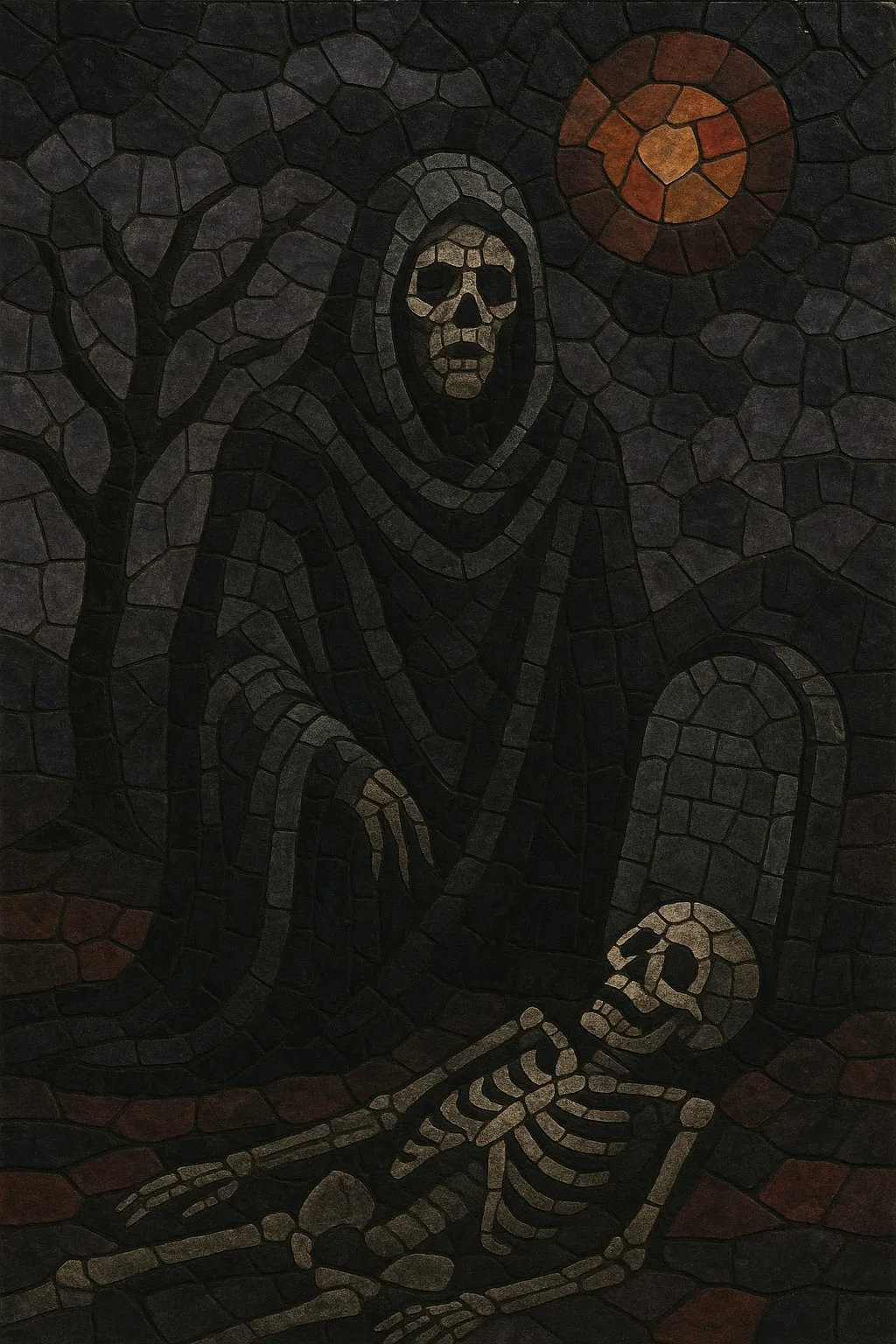Doom metal is a heavy metal subgenre defined by slow to mid-tempo grooves, down-tuned, highly distorted guitars, and an atmosphere of dread, melancholy, and weight. It emphasizes ominous, minor-key riffs and sustained tones over speed or virtuosity, creating a crushing sense of space and inevitability.
Vocals range from plaintive and theatrical (epic/traditional doom) to anguished wails or harsh growls (death-doom), and lyrics often explore themes of suffering, mortality, the occult, apocalyptic visions, and existential despair. Song structures are typically riff-centric and long-form, with repetition and gradual dynamic shifts producing a hypnotic, ritualistic feel.
The roots of doom metal trace to the United Kingdom in the early 1970s, where Black Sabbath’s monolithic riffs, slow tempos, and ominous atmosphere set a template for heaviness. Tony Iommi’s down-tuned guitar (notably on Master of Reality, 1971) and the tritone-laden song Black Sabbath became foundational touchstones. Early hard/acid/psychedelic rock and blues rock informed the style’s emphasis on thick riffs and a somber mood.
Doom coalesced as a distinct genre in the 1980s through bands that leaned into slowness, sustain, and gloom. In the UK, Witchfinder General connected doom’s aesthetics to the NWOBHM moment, while in the US, Pentagram (whose 1970s material finally emerged widely in the 1980s), Saint Vitus (via SST Records’ punk-adjacent network), and Trouble forged a deliberate, riff-first, Sabbathian sound. Sweden’s Candlemass crystallized “epic doom” with Epicus Doomicus Metallicus (1986), emphasizing operatic vocals, majestic melodies, and dramatic, dirge-like pacing.
The 1990s saw multiple branches: death-doom (Paradise Lost, My Dying Bride, early Anathema) fused growled vocals and death-metal weight with doom’s pacing; funeral doom (Thergothon, Skepticism, later Esoteric) slowed the music to glacial tempos and vast organ-like textures; stoner/doom (Sleep, Electric Wizard) combined fuzz-saturated tones and psychedelic repetition; and sludge metal (Melvins’ influence, Eyehategod, Crowbar) mixed hardcore punk abrasion with doom’s heaviness. Cathedral’s Forest of Equilibrium (1991) underscored how massive, crawling riffs could be both hypnotic and oppressive.
Doom continued proliferating globally, influencing post-metal (Neurosis, Isis), drone metal (Sunn O))) ), and hybrid styles like doomgaze. Labels such as Peaceville, Rise Above, and Southern Lord helped sustain and export the sound. The genre remains vibrant across traditional, epic, stoner, sludge, death-doom, and funeral doom scenes, with modern acts refining production (thick low-mids, tube-driven saturation) while preserving the core ethos of inexorable, riff-centered heaviness.


